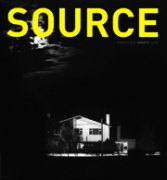EDITORIAL:
Issue 51 — Summer 2007
Issue 51 — Summer 2007
View Contents ▸
Clive Landen stopped being a 'socially concerned' editorial photographer when he moved out of the city and says, 'I always thought of landscape as a bit easy'. He explains how he discovered this wasn't the case in describing the challenges of photographing roadkill for his work Familiar British Wildlife and then getting access to the burning and burial sites of the foot and mouth epidemic for his work The Abyss which is featured here.
A stage in the development of Landen's approach was the idea of photographing vertically downwards with no horizon visible. Eugenie Shinkle describes how this point of view would not be found in contemporary computer game design which, unlike recent photography, is still indebted to a classical tradition of landscape picture making. By comparing landscape photography with the structure of gamescapes she explains the underlying principles of both traditions.
Colin Graham discusses Ciaránóg Arnold's photographs of men living in and around Ballinasloe, who are 'down and out'. The work attempts to move outside the conventions of documentary accounts of the dispossessed and Graham finds a hint of the sublime residing in these scenes. He goes onto consider how for Arnold the view 'from below' might rekindle a sense of place and bring about a clarity of vision.
Jamie McGillivray's favourite book as a child was Little Tommy Nobody, a story about a young bird who falls from his nest and lands in the garden below. He then explores this exotic landscape that he has only glimpsed from afar, meeting other birds along the way. His adventure is a quest for his own identity. McGillivray takes this innocent parable as an analogy for his approach to photography as a method for understanding his place in the world.
— The Editors





